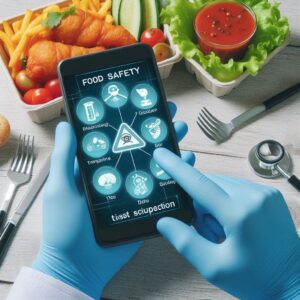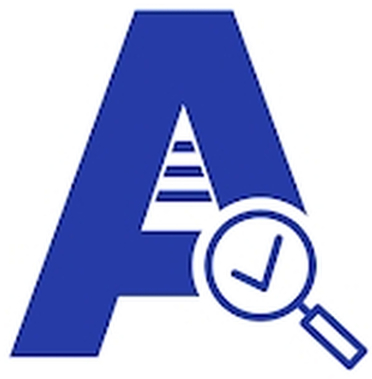Food Safety Critical Figure of 8 Checklist
The ” Food Safety Critical Figure of 8 ” checklist is a structured approach to assessing and managing critical aspects of food safety.
It typically focuses on eight key areas that are crucial for maintaining food safety standards. Here’s a detailed checklist that can help in evaluating these critical areas:

Food Safety Critical Figure of 8 Checklist
1. Personal Hygiene
- Handwashing:
- Are handwashing facilities equipped with soap, hot water, and paper towels?
- Are staff observed washing hands properly and at appropriate times?
- Protective Clothing:
- Are staff wearing clean uniforms, gloves, and hair coverings as required?
- Are uniforms changed regularly and kept clean?
- Health Status:
- Are staff free from illnesses that could contaminate food (e.g., gastrointestinal infections)?
- Are there protocols for reporting and managing staff illness?
2. Food Storage
- Temperature Control:
- Are refrigerators and freezers operating at the correct temperatures (below 40°F/4°C for refrigerators, 0°F/-18°C for freezers)?
- Is food stored at the correct temperatures to prevent spoilage?
- Food Separation:
- Are raw and cooked foods stored separately to prevent cross-contamination?
- Are food items properly covered and labeled with use-by dates?
- Shelving and Organization:
- Are food items stored off the floor and on clean, organized shelves?
- Is there a clear FIFO (First In, First Out) system in place for food rotation?
3. Cleanliness and Sanitation
- Surface Cleaning:
- Are food contact surfaces cleaned and sanitized regularly?
- Are cleaning schedules documented and followed?
- Equipment Maintenance:
- Is kitchen equipment regularly cleaned and maintained?
- Are there procedures in place for cleaning and sanitizing non-food contact surfaces?
- Pest Control:
- Are there signs of pest activity (e.g., droppings, nests)?
- Are pest control measures implemented and monitored?
4. Food Handling
- Safe Cooking Temperatures:
- Are food items cooked to the correct internal temperatures to ensure safety?
- Are food thermometers calibrated and used regularly?
- Thawing Practices:
- Is food thawed safely (e.g., in the refrigerator, under cold running water)?
- Are thawing procedures documented and followed?
- Cross-Contamination Prevention:
- Are utensils, cutting boards, and surfaces used for raw and cooked foods kept separate?
- Are proper cleaning and sanitizing practices in place to prevent cross-contamination?
5. Storage Practices
- Labeling and Dating:
- Are all food items labeled with accurate use-by dates and storage instructions?
- Is there a system in place for checking and removing expired food?
- Food Handling Procedures:
- Are procedures for handling and storing food followed correctly?
- Are food storage areas clean and organized?
- Chemical Storage:
- Are chemicals stored separately from food products?
- Are chemicals properly labeled and stored in their original containers?
6. Documentation and Records
- Food Safety Logs:
- Are temperature logs for refrigerators, freezers, and cooking processes maintained?
- Are cleaning and sanitation records up-to-date?
- Training Records:
- Are staff training records available and up-to-date?
- Are staff trained in food safety practices and procedures?
- Compliance Records:
- Are records of inspections, audits, and corrective actions maintained?
- Are regulatory compliance documents readily available?
7. Emergency Procedures
- Emergency Contacts:
- Are emergency contact numbers (e.g., local health department, poison control) clearly posted?
- Are staff aware of emergency procedures and contacts?
- Incident Response:
- Are procedures in place for responding to food safety incidents (e.g., contamination, allergen exposure)?
- Are incident reports documented and reviewed?
- Food Safety Alerts:
- Are there procedures for handling food recalls or safety alerts?
- Are staff trained to respond to food safety alerts and recalls?
8. Customer Service and Feedback
- Customer Complaints:
- Is there a system for receiving and addressing customer complaints related to food safety?
- Are complaints documented and investigated?
- Customer Communication:
- Are customers informed about food safety practices (e.g., allergens, food handling)?
- Is there clear communication about food safety policies to customers?
- Quality Control:
- Are there procedures for monitoring and ensuring the quality and safety of food served?
- Is feedback from customers used to improve food safety practices?
Using the Checklist
- Inspection: Use the checklist to guide your inspection of each critical area. Ensure that each item is reviewed and documented.
- Documentation: Record observations, including any non-compliances or areas needing improvement. Attach photos if the app or documentation system allows.
- Reporting: Compile the findings into a detailed report using the mobile app or another reporting tool. Include recommendations and corrective actions if needed.
- Follow-Up: Implement corrective actions and schedule follow-up inspections to ensure compliance and continuous improvement.
Using this checklist helps ensure comprehensive coverage of critical food safety aspects, promotes adherence to standards, and enhances overall food safety management.


To perform a Food Safety Critical Figure of 8 inspection using eAuditor Audits & Inspections, you’ll follow a structured process leveraging the app’s features to streamline and document the inspection. Here’s a step-by-step guide:


1. Prepare the eAuditor Audits & Inspections
- Install and Configure:
- Download: Ensure the eAuditor Audits & Inspections app is installed on your device.
- Setup: Configure the eAuditor Audits & Inspections app with the Food Safety Critical Figure of 8 checklist, including the key inspection areas.
- Customize Food Safety Critical Figure of 8 Checklist:
- Tailor: Adjust the checklist in the app to match your specific food safety needs and compliance requirements.
- Gather Equipment:
- Mobile Device: Ensure your device is charged and functioning.
- Additional Tools: Prepare any additional tools (e.g., thermometer, camera) if required for the inspection.
2. Conduct the Inspection
- Log In:
- Open the eAuditor Audits & Inspections app and log in with your credentials.
- Select Inspection Type:
- Choose the inspection type (e.g., routine, surprise) and specify the location or area being inspected.
- Start Inspection:
- Begin the inspection process by navigating to the Food Safety Critical Figure of 8 checklist in the app.
3. Complete the Food Safety Critical Figure of 8 Checklist
A. Personal Hygiene
- Handwashing:
- Inspect Facilities: Check handwashing stations for soap, water, and paper towels.
- Record Observations: Document whether staff are following proper handwashing protocols and attach photos if needed.
- Protective Clothing:
- Check Attire: Ensure staff are wearing clean uniforms, gloves, and hair coverings.
- Note Compliance: Record observations about protective clothing adherence.
- Health Status:
- Assess Health Practices: Verify staff health policies and procedures for reporting illness.
- Document: Record any issues or deviations.
B. Food Storage
- Temperature Control:
- Measure Temperatures: Use the app to record temperatures of refrigerators, freezers, and food items.
- Document Findings: Input temperature readings and note any deviations from safe ranges.
- Food Separation:
- Check Storage: Ensure raw and cooked foods are stored separately and properly labeled.
- Record: Note any improper storage practices.
- Shelving and Organization:
- Inspect Shelving: Check that food is stored off the floor and in an organized manner.
- Document: Record observations and attach photos if needed.
C. Cleanliness and Sanitation
- Surface Cleaning:
- Inspect Surfaces: Check that food contact surfaces are cleaned and sanitized regularly.
- Record: Document cleanliness and any issues found.
- Equipment Maintenance:
- Check Equipment: Verify that kitchen equipment is clean and maintained.
- Note Issues: Record any maintenance or cleanliness issues.
- Pest Control:
- Look for Pests: Inspect for signs of pest activity and verify pest control measures.
- Document Findings: Record evidence of pests and effectiveness of control measures.
D. Food Handling
- Safe Cooking Temperatures:
- Measure Temperatures: Verify that food items are cooked to safe internal temperatures.
- Record: Input cooking temperatures and note compliance.
- Thawing Practices:
- Check Thawing: Ensure food is thawed using safe methods (e.g., in the refrigerator).
- Document: Record any issues with thawing practices.
- Cross-Contamination Prevention:
- Inspect Practices: Verify that cross-contamination prevention practices are followed.
- Record Findings: Document any deviations and attach supporting evidence.
E. Storage Practices
- Labeling and Dating:
- Check Labels: Ensure food items are properly labeled with use-by dates.
- Document: Record labeling practices and any issues found.
- Food Handling Procedures:
- Verify Procedures: Check that food handling procedures are followed correctly.
- Record: Note any deviations or issues.
- Chemical Storage:
- Inspect Storage: Ensure chemicals are stored separately from food and properly labeled.
- Document: Record any issues with chemical storage.
F. Documentation and Records
- Food Safety Logs:
- Review Logs: Verify that temperature logs, cleaning records, and other food safety logs are maintained.
- Document: Record any issues or missing documentation.
- Training Records:
- Check Records: Ensure staff training records are up-to-date.
- Note Compliance: Document any gaps in training records.
- Compliance Records:
- Review Records: Check records of inspections, audits, and corrective actions.
- Document: Record any missing or incomplete records.
G. Emergency Procedures
- Emergency Contacts:
- Verify Contacts: Ensure emergency contact numbers are posted and accessible.
- Document: Record any issues with emergency contact information.
- Incident Response:
- Check Procedures: Verify that procedures for responding to food safety incidents are in place.
- Record: Document any issues with incident response procedures.
- Food Safety Alerts:
- Review Procedures: Ensure procedures for handling food recalls or safety alerts are in place.
- Document: Record any issues or gaps in procedures.
H. Customer Service and Feedback
- Customer Complaints:
- Check System: Verify that there is a system for receiving and addressing customer complaints.
- Document: Record any issues with the handling of customer complaints.
- Customer Communication:
- Review Communication: Ensure customers are informed about food safety practices.
- Document: Record any issues with customer communication.
- Quality Control:
- Inspect Quality: Check procedures for monitoring and ensuring food quality.
- Document: Record any issues with quality control procedures.
4. Finalize the Inspection
- Review Data:
- Verify Entries: Review all data entered into the app for completeness and accuracy.
- Generate Report:
- Create Report: Use the app to generate a detailed inspection report, including observations, non-compliances, and recommendations.
- Submit Report:
- Send Report: Submit the report through the app to relevant stakeholders or a central database.
- Discuss Findings:
- Meeting: Discuss findings with management and agree on corrective actions.
5. Follow-Up
- Monitor Corrective Actions:
- Track Progress: Use the app to monitor the progress of corrective actions and improvements.
- Schedule Re-Inspection:
- Plan Follow-Up: Schedule follow-up inspections to ensure corrective actions have been implemented effectively.
- Provide Feedback:
- Share Insights: Offer feedback and additional training if needed to address specific issues.
